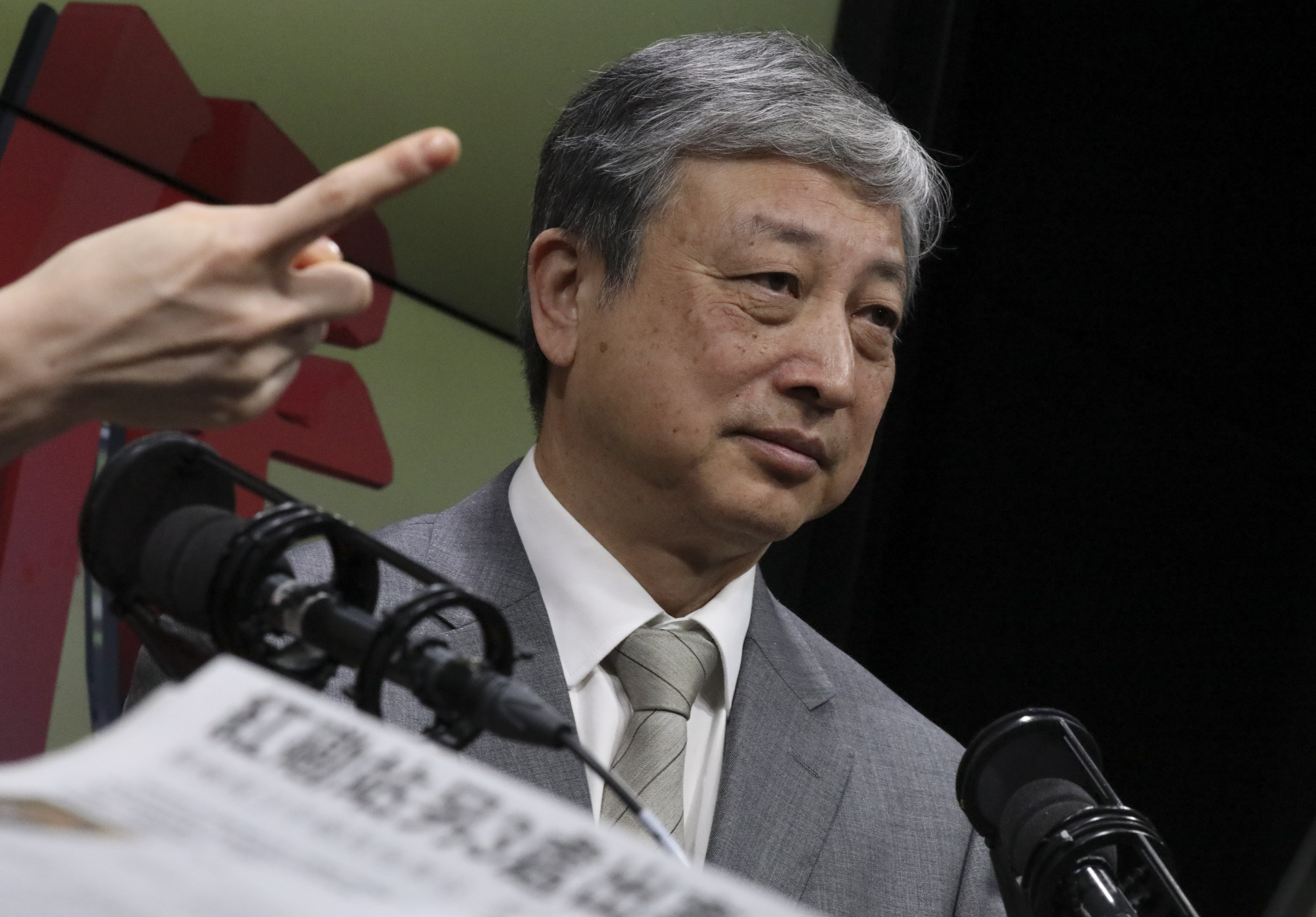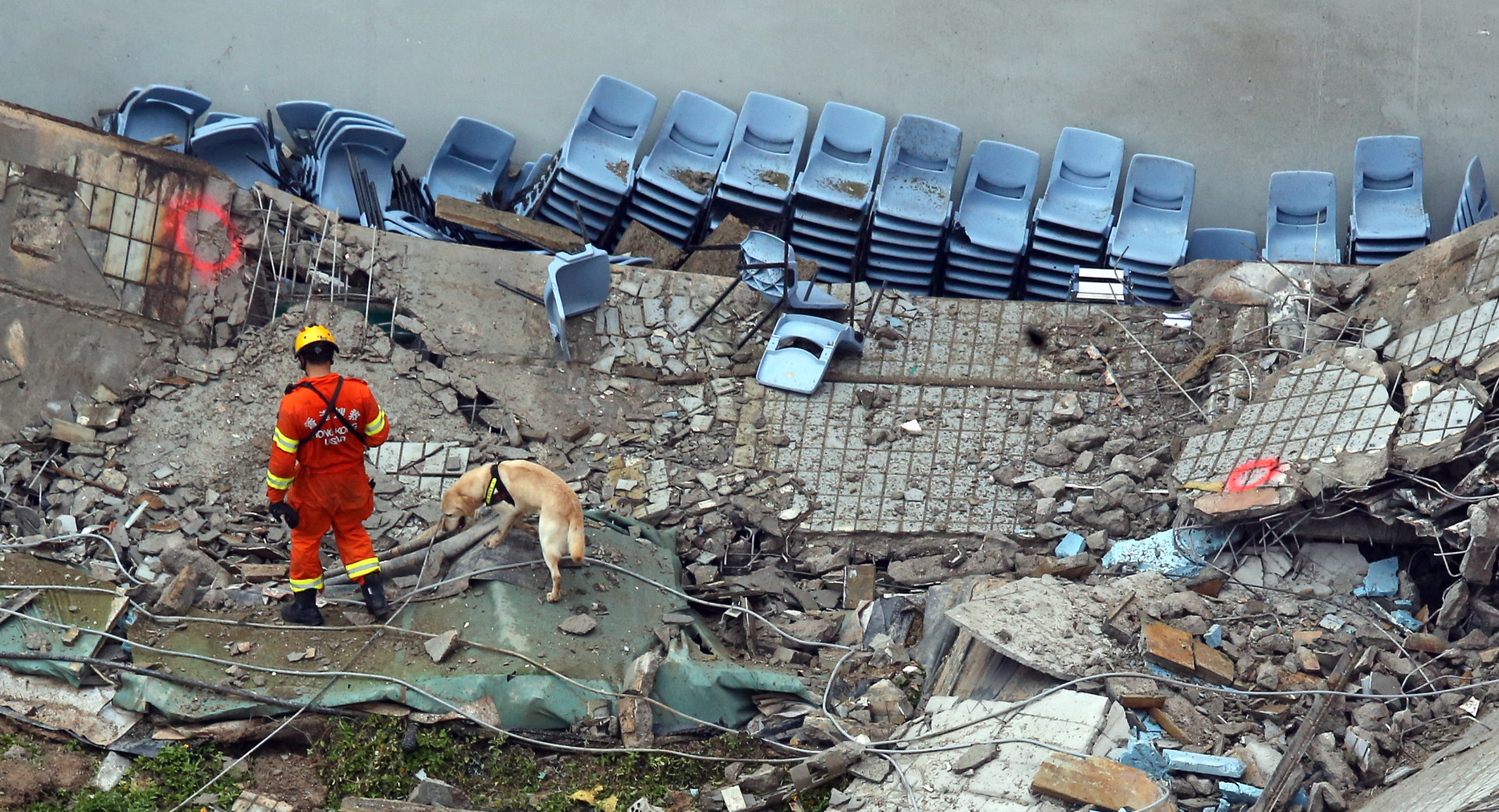
Experts call on Hong Kong government to take falling objects at hospitals as wake-up call to review safety of all buildings
- Inspect all government buildings and public institutions, says veteran structural engineer
- Safety in public hospitals has recently been under spotlight following spate of falling items
A recent spate of falling items in Hong Kong’s public hospitals should serve as a wake-up call for the government and public institutions to review the safety of their buildings and their maintenance plans, industry experts have said.
Veteran structural engineer Ngai Hok-yan told the Post on Saturday authorities should inspect their facilities and make necessary repairs to prevent more mishaps.
“The incidents in public hospitals have sounded an alarm to the government and other public institutions about the structural safety of their buildings and the soundness of their maintenance regimes,” he said.
“It’s like doing a body check. They should conduct a wholesale review of their buildings to see if there are potential problems that need immediate repairs. They should not wait for other mishaps or problems to surface or a point of no return.”

Ngai advised the government and others to target old buildings first and conduct spot tests on concrete slabs and steel bars to see if any immediate repairs were needed.
“The earlier the problems can be identified, the easier they can be fixed. Through early detection, different parties can improve their infrastructure planning to see if they need to renew or rebuild some facilities and strengthen the governance of their maintenance regimes,” he said.
Safety in public hospitals has recently been under the spotlight following a spate of incidents involving fallen items. Last year there were two such cases. This year there were three up until Friday when another three were reported, taking the total to eight.
The cases took place across seven hospitals and one healthcare centre that have been around for 17 to 62 years, with most of the facilities built about 30 years ago.
Lights out for 12 Hong Kong public hospital operating rooms over equipment woes
The incidents that happened on Friday included the falling of one segment of a false ceiling in the Central Sterile Supplies Department on the lower ground floor of the main block of Pok Oi Hospital, redeveloped and expanded in 2006, which was believed to have been caused by water seepage at a drainage pipe.
Another incident involved a piece of the false ceiling falling in the corridor of the accident and emergency department at Pamela Youde Nethersole Eastern Hospital, opened in 1993, which was caused by seepage at a water pipe.
A ceiling light cover at a staff toilet in Kwai Chung Hospital fell on Friday.
The Hospital Authority said nobody was injured, with patient services remaining intact and that none of the incidents on Friday involved the buildings’ structural safety.

The three earlier cases this year included one in the paediatric and adolescent psychiatric unit at Kwai Chung Hospital, which opened in 1981. Several pieces of concrete fell from the ceiling in a consultation room on March 8. No one was injured.
According to the authority, Fujitac Construction and Engineering Consultants was responsible for building safety work in public hospitals and carried out a check at Kwai Chung Hospital in 2021.
In mid-February, a surgical light in United Christian Hospital fell and injured an anaesthesia assistant in the shoulder. An expert review found signs of metal fatigue in screws used to secure the fixture to the ceiling, and the problem could have been identified if checks had been conducted properly.
The hospital, founded in 1973 and expanded in 1999, is undergoing redevelopment and expansion to be completed in 2025-26.
In another incident, four pieces of concrete were found inside the false ceiling of a workroom in the Centre for Health Protection building in Mong Kok during a routine maintenance inspection early this month. The biggest piece was 0.65 by 0.45 metres.
The two incidents last year involved Castle Peak Hospital, where a piece of concrete fell onto an empty bed in November, and at Tuen Mun Hospital, where part of the false ceiling in a men’s washroom fell in May.
A six-strong committee comprising specialists in engineering, construction and corporate communications has been formed.
Hong Kong’s Hospital Authority reveals concrete slab fell onto patient bed
The committee will review medical equipment maintenance and communication between hospitals, the authority’s head office, and the public. It is expected to submit recommendations in three months.
Lawmaker David Lam Tzit-yuen, who represents the medical sector, said all public facilities, including government buildings, schools and sports venues, should be subject to a safety review.
“All buildings and facilities will eventually suffer ageing problems, so we need to emphasise their maintenance,” he said.
“The government and other public institutions should conduct a wholesale review on the safety of their buildings, such as whether the existing maintenance regime of the facilities is sufficient.”

He said the authority needed to clarify whether the contractor in charge of maintenance was responsible for the mishaps and if it needed to strengthen its regime.
Aaron Bok Kwok-ming, president of the Hong Kong Institution of Engineers, said there was no need for the government or public bodies to review their building safety as they had put in place a robust maintenance regime to ensure the structural safety of facilities.
“They have a maintenance schedule for conducting different levels of inspections of their buildings regularly. Usually, visual inspections suffice to detect most of the potential problems, such as cracks and concrete spalling,” he said.
“I suspect the recent problems were concealed by the false ceiling, and the contractor failed to spot the problems.”

